Affiliate links on Android Authority may earn us a commission. Learn more.

OnePlus 9RT review: A lackluster return to value flagships
Published onJanuary 22, 2022
OnePlus 9RT
MSRP:
What we like
What we don't like
Our scores
OnePlus 9RT
OnePlus is dead, long live OnePlus. Ardent fans and many closely following the smartphone industry have been sounding the alarm over the company’s apparent disconnect from what customers want. If the increasingly northward-bound prices and the diversified but increasingly bland lineup weren’t a clue, the “official” merger with OPPO was, seemingly, the final nail in the coffin.
The OnePlus 9RT is the antithesis to that. A phone that tries to scramble back to the company’s value flagship origins but, at first glance, comes across as incredibly derivative with its copious recycled design elements. But is there more than meets the eye here? We find out in the Android Authority OnePlus 9RT review.
What you need to know about the OnePlus 9RT
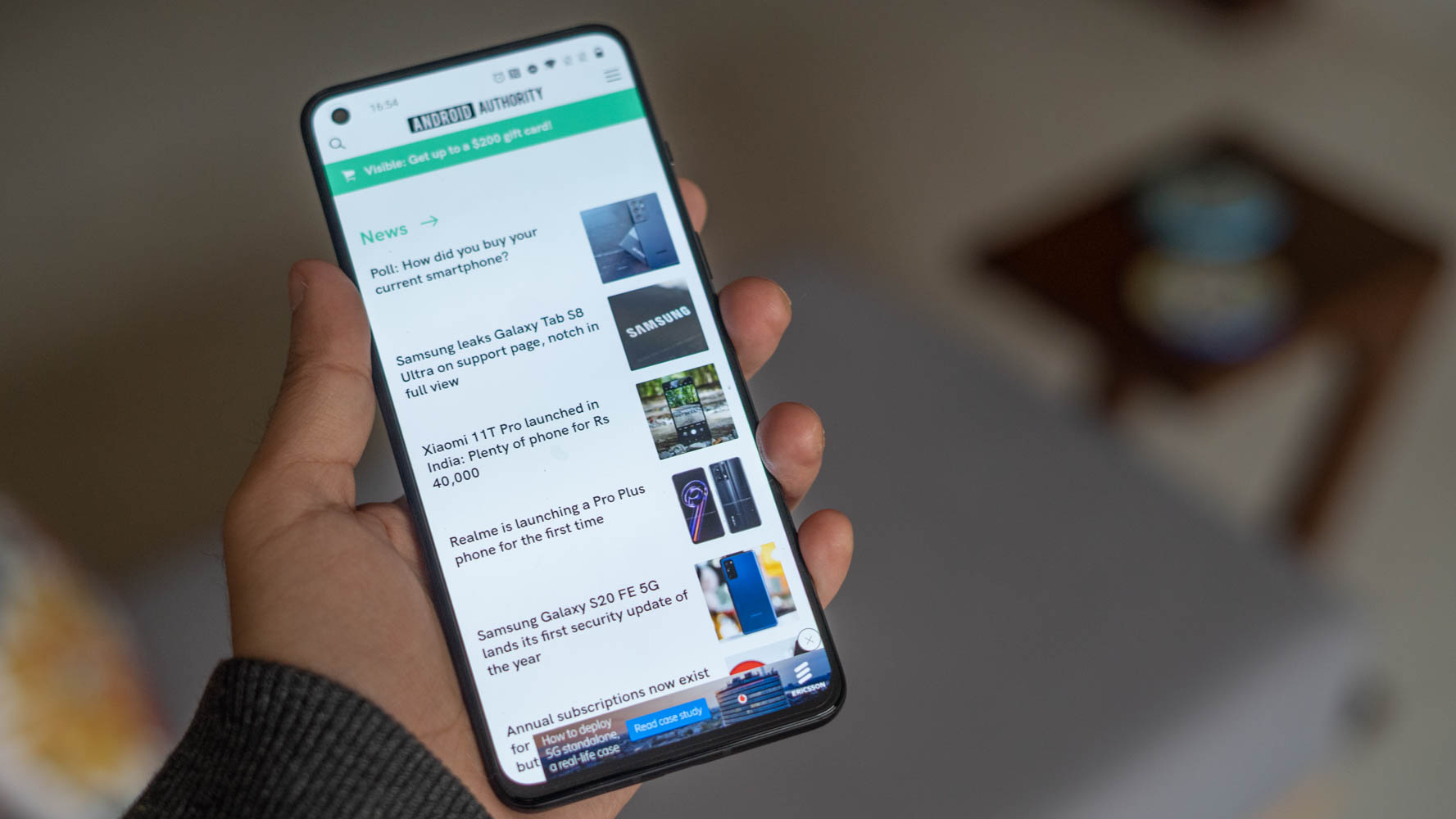
- OnePlus 9RT (8GB RAM, 128GB Storage): Rs. 42,999 (~$576)
- OnePlus 9RT (12GB RAM, 256GB Storage): Rs. 46,999 (~$630)
The OnePlus 9RT is an India and China-exclusive smartphone that was initially introduced in October 2021. The phone was confined to Mainland China at launch but has since made its way to India. The value-flagship smartphone is a successor to last year’s OnePlus 9R and follows it up with specs more in line with 2022 standards.
The phone comes close to OnePlus’ ideology of balancing performance with value. As such, you’ll see features like a souped-up Snapdragon 888 chipset that brings the phone in line with the OnePlus 9 and OnePlus 9 Pro flagship lineup. While the company has already unveiled the upcoming OnePlus 10 Pro, there’s no set timeline for an international launch. Considering that the OnePlus 9R didn’t release in the US or Europe, you shouldn’t hold your breath for further availability.
Related: The best OnePlus phones
Launching at a price point starting at Rs. 42,999 (~$576) in India, the phone comes in two different configurations, giving buyers the option of 8GB or 12GB of RAM accompanied with 128GB or 256GB of storage. The high-end variant, available for Rs. 46,999, errs astonishingly close to the existing OnePlus 9. The phone is available in two colors — Hacker Black and Nano Silver.
How is the design?
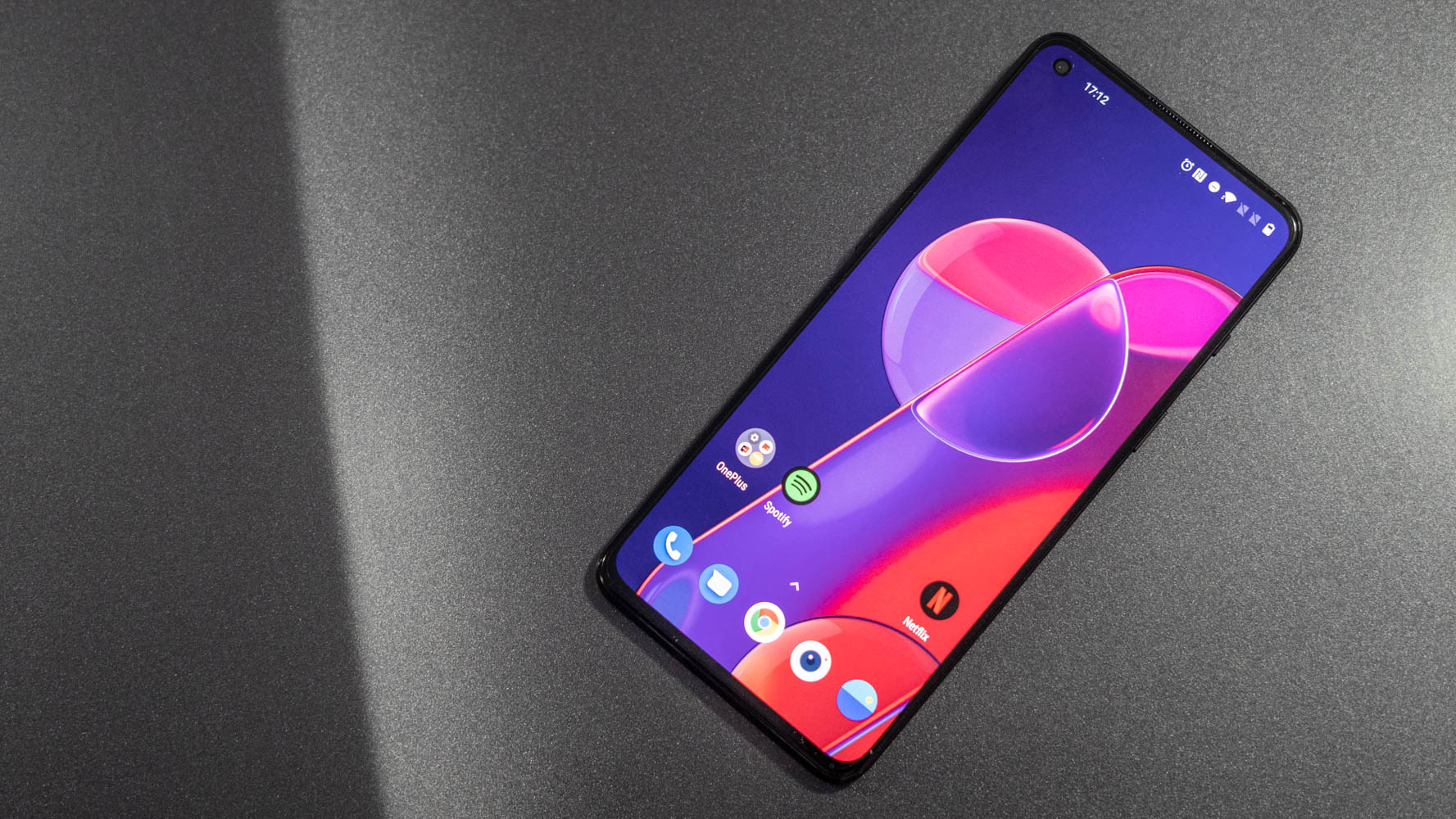
The OnePlus 9RT sticks to the script pioneered by the OnePlus 9 series with a design that is familiar to a fault. Placed next to the OnePlus 9R, in particular, you’ll notice the ever-so-slightly stretched-out dimensions, and that’s about it. It certainly isn’t fresh, but in a world of overtly glitzy devices, the OnePlus 9RT presents itself as a relatively staid yet somewhat sophisticated alternative.
The entire back panel is essentially a clean and sleek slate, with both the back and front sporting Gorilla Glass 5. The glass curves around the aluminum mid-frame and presents a comfortable edge that doesn’t dig into your palms. The OnePlus 9RT uses a pretty polarising paint scheme. The “Hacker Black” variant we have on hand has a matte finish that gives the illusion of a sandstone back panel. The phone, however, is anything but grippy to hold. In fact, we’d highly recommend investing in a quality case for the phone or using the included silicon case.
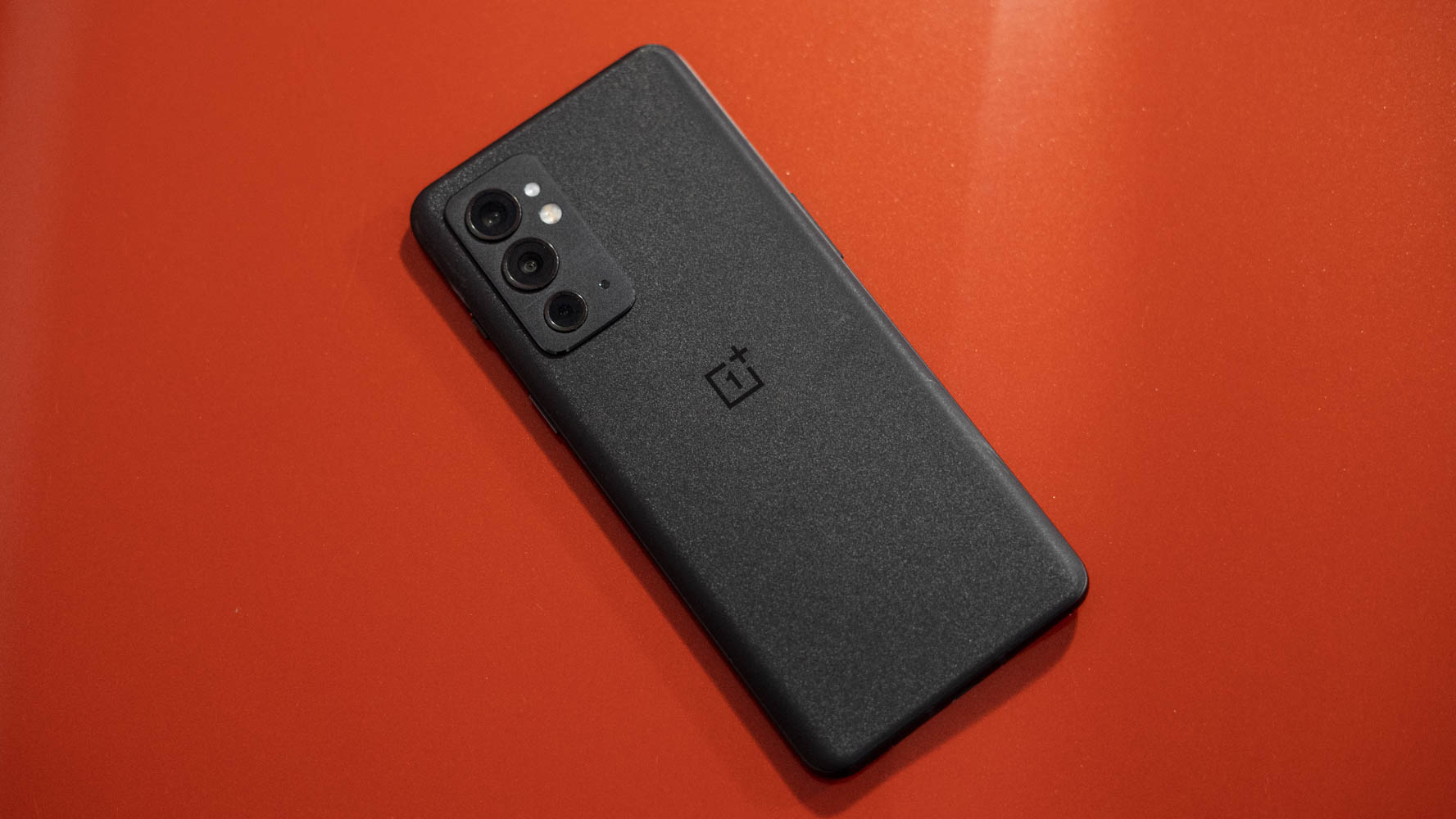
Another curious addition to the paint scheme is a speckle pattern. Under the right light source, you’ll notice an explosion of bright starlight elements that glitter and gleam. Personally, I’m not a big fan, but if you like a little bit of subtle bling, the phone should be right up your alley.
The optical fingerprint scanner embedded in the display is amongst the fastest in the business and I had no trouble unlocking the phone over the course of testing. You’ll find insecure software-based face-unlock as well, but we’d be wary of using that over more secure options. Elsewhere, the camera layout is much the same as on other modern OnePlus devices, with a triple camera setup and LED flash to boot. No surprises there.
Questionable glitter pattern aside, the build quality here is top notch.
Build quality on the phone is top-tier with excellent tactile feedback. The alert slider continues to be a welcome inclusion (and no longer a given for OnePlus phones) and, despite the larger dimensions, the phone remains comfortable to hold. There’s just that slippery back to contend with, of course.
The increased dimensions of the phone compared to its predecessor are accompanied by a larger display. The 120Hz AMOLED panel stretches to a full 6.62-inches, giving you a bit more room for viewing text. While the specifications might not belay much of an increase in size, you’ll certainly notice a difference when holding the OnePlus 9RT next to the OnePlus 9R. What you think of this will mostly come down to your preference for compact phones vs a larger display.

The display itself is decent enough for the money, though it does have its share of issues. Setting the display calibration to SRGB or DCI-P3 mode presents a very noticeable green tint. There are options to adjust the warmth of the screen, but the lack of granular control means that there is no way to reduce the green tint. The panel itself does not support HDR content either.
That said, the panel is passable in general and gets bright enough for outdoor use. Colors appear vivid and saturated and the punch-hole is adequately small. The dynamic 120Hz support allows for power-saving where possible, while ramping up the panel to the highest refresh rate supported for smooth scrolling in the UI and in supported apps.
How powerful is the OnePlus 9RT?
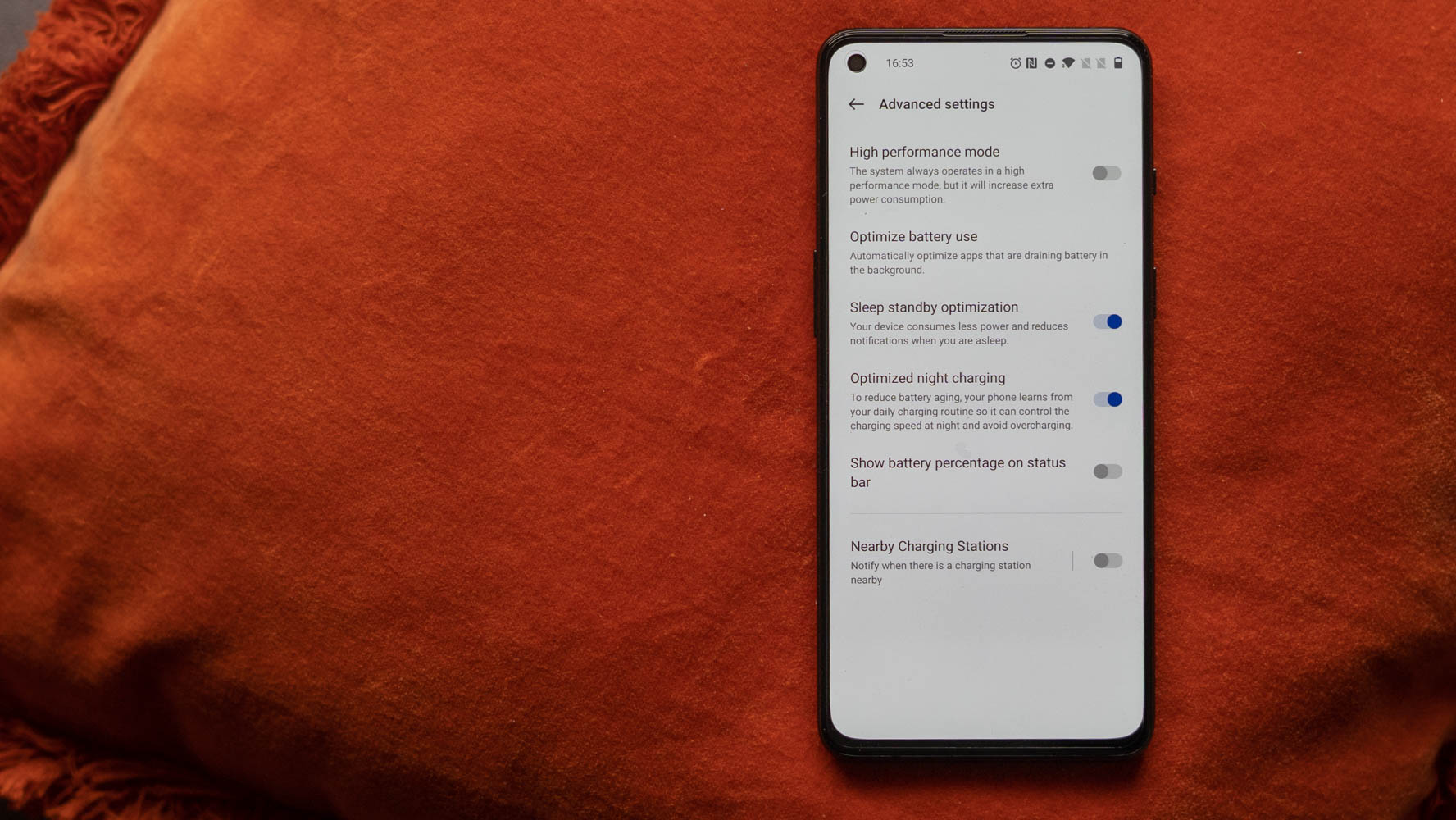
The primary improvement with the OnePlus 9RT over the OnePlus 9R is the jump to a Snapdragon 888 chipset — the same SoC powering the OnePlus 9 and 9 Pro. This brings the new value offering right in line with the big boys in the company’s current lineup — at least until the OnePlus 10 series goes global in the coming months. Nevertheless, a flagship chipset means flagship performance, and the OnePlus 9RT delivers in spades — but there’s a catch.
Read more: Snapdragon SoC guide — All of Qualcomm’s smartphone processors explained
The OnePlus 9RT ships in a throttled state that’s optimized for battery life over all-out performance. This doesn’t make a noticeable difference in day-to-day usage, but you’ll want to drop into the settings to toggle the high-performance mode if you’re a power user or dedicated mobile gamer looking to draw full power of the Snapdragon 888. Doing so unlocks the full potential of the phone but takes a big bite out of the battery life.
With that said, the performance on offer here is excellent straight out of the box. In my week with the phone, the OnePlus 9RT never struggled with my workload consisting of heavy email use, Slack, social media, and music playback. This, of course, is to be expected from a top-of-the-line chipset.
It has the power of the Snapdragon 888 but if you're looking for a 120Hz gaming beast, The OnePlus 9RT ain't it just yet.
The gaming experience is pretty good too. I was able to max out the graphics options in Call of Duty: Mobile without any dropped frames. Genshin Impact, on the other hand, benefitted from unlocking the high-performance mode, which smoothed out the occasional frame drop. Regardless of the mode, you won’t be lacking for grunt here. On the other hand, if you’re on the lookout for high refresh rate gaming support, the OnePlus 9RT disappoints. All the games we tried out were locked to 60Hz, signaling that OnePlus hasn’t whitelisted the games just yet.
We put the phone through its paces with a standard benchmark setup comprising of AnTuTu and Geekbench, as well as 3D Mark. At the default out-of-the-box setting, the phone scores significantly lower than similarly-specced devices. That makes sense now that OnePlus has openly confessed to throttling hardware for better battery and thermal efficiency.
Unlocked to its full potential, the scores are more or less in line with the OnePlus 9. Do keep in mind that the phone experiences significant battery drain when set to the high-performance mode.
The OnePlus 9RT packs the same battery and charging setup as the OnePlus 9, so you know what to expect: the 4,500mAh cell will get you through a full day, and that’s about it. My typical daily use involves a fair amount of texting, social media use, and emails with a few phone calls tossed in as well. On most days, I found myself reaching for the charger by 9PM. It’s not best in class, but battery life will suffice for most users.
Thankfully, the phone charges at a speedy clip using the included 65W Warp Charge charger. A full top-up from scratch takes a little over 35 minutes. There’s no wireless charging here, though.
How good are the OnePlus 9RT cameras?
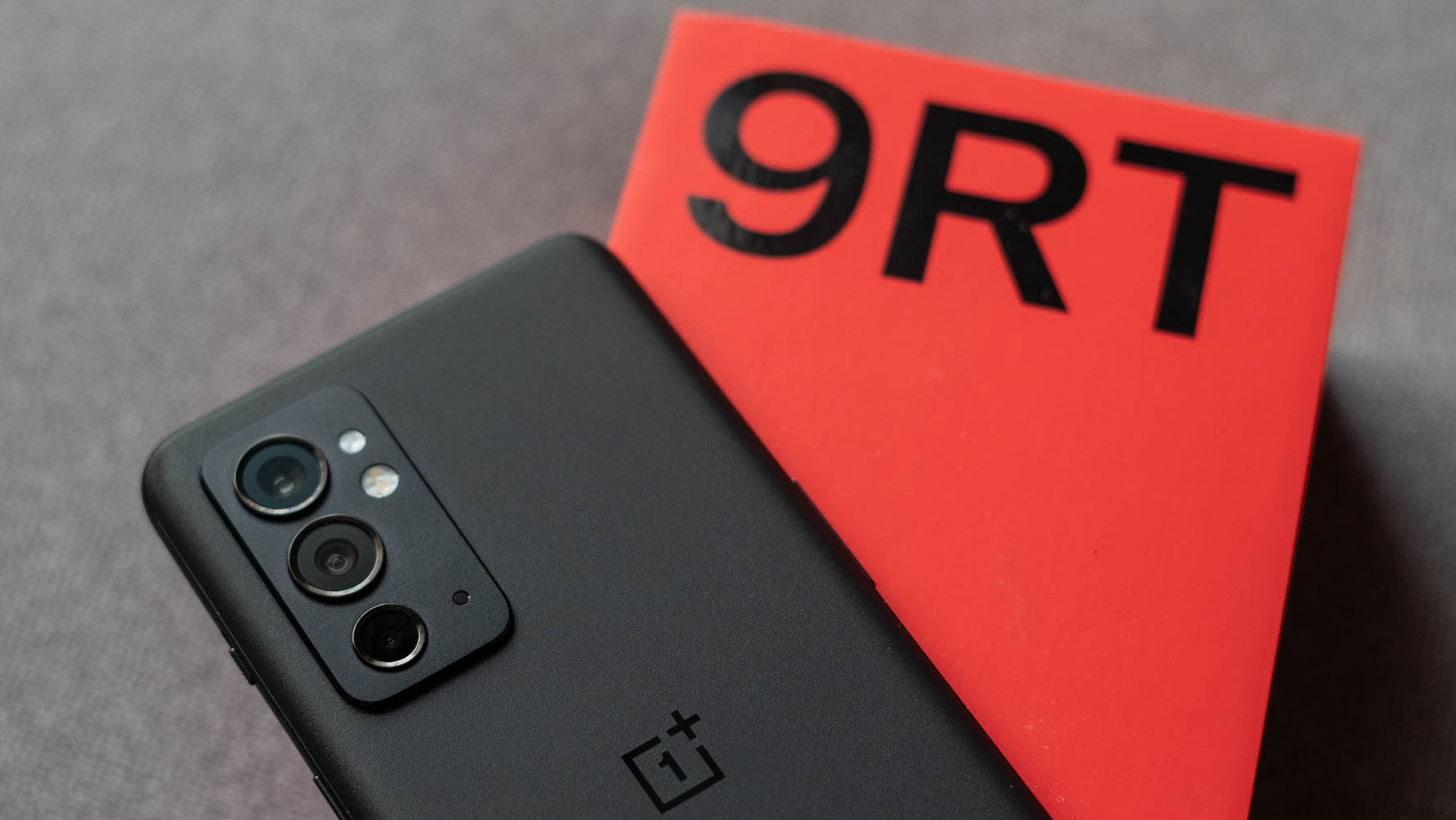
The OnePlus 9RT sports three cameras on the back, one less than the OnePlus 9R. This time around, the company has removed the monochrome sensor and replaced the 48MP primary camera with a 50MP IMX766 sensor that served as the ultrawide camera on the OnePlus 9. The 16MP ultrawide camera on the OnePlus 9RT remains the same as on the OnePlus 9R, but the macro sensor has been downgraded to a 2MP shooter compared to the 5MP camera on the OnePlus 9R.
The OnePlus 9RT bucks the trend by launching with a pretty solid camera right out of the box. The primary camera captures well-detailed shots with colors that don’t scream oversaturated. Dynamic range is pretty good too, with the phone managing to expose enough details in darker regions without overexposing the entire shot. Overall, the HDR capabilities impressed and the primary camera of the OnePlus 9RT stands out as one of the more capable options in its price band.
Shooting indoors, the phone manages very good white balance metering and keeps noise levels in check. Similarly, in the shot of the Nintendo Switch above, the colors are spot on with good natural bokeh. Finally, outdoors, I came away impressed with the dynamic range outdoors, more so when compared to previous OnePlus devices. Digital noise reduction is also kept in check and you won’t see much smearing or the watercolor effect we’ve previously seen on OnePlus phones.
Check out: The best camera phones you can get
The ultrawide camera doesn’t perform quite as well, with very obvious distortion near the edges. The level of detail also drops down, with noise becoming noticeable in less than perfect light.
While the regular camera does a pretty good job of maintaining focus and white balance in less than ideal lighting, I can’t say quite the same about the night mode. The night mode on the OnePlus 9RT exhibits some peculiar behavior where the shots appear underexposed. Shooting with the dedicated mode resulted in lost details, and an overall dim image with no apparent benefits.
Coming to the macro camera, the less said the better. The OnePlus 9R didn’t have a particularly great 5MP macro camera to start with. The switch to a 2MP sensor has simply made it worse. The macro camera on the OnePlus 9RT shoots incredibly poor images with elevated noise and mushy details. In fact, cropping in from the primary camera results in better-looking shots than those from the macro shooter.

The front-facing 16MP camera on the OnePlus 9RT does a pretty decent job, though I observed that it struggled a bit with skin tones. Both in the regular and portrait mode, it gave my skin elevated red tones to boost warmth. That said, there’s a good level of detail here. The portrait mode did an above-average job of segmenting my unruly mop of hair and was able to create a believable depth of field effect.
On the video front, the camera goes all the way to 4K resolution at 60fps. The bitrate isn’t the best in the business and you can spot some digital artifacts, especially in panning shots. The dynamic range, on the other hand, is pretty good, and with decent lighting, it is absolutely possible to get some good-looking footage.
Head on over to our Google Drive folder for full-resolution photo samples from the OnePlus 9RT.
Anything else?
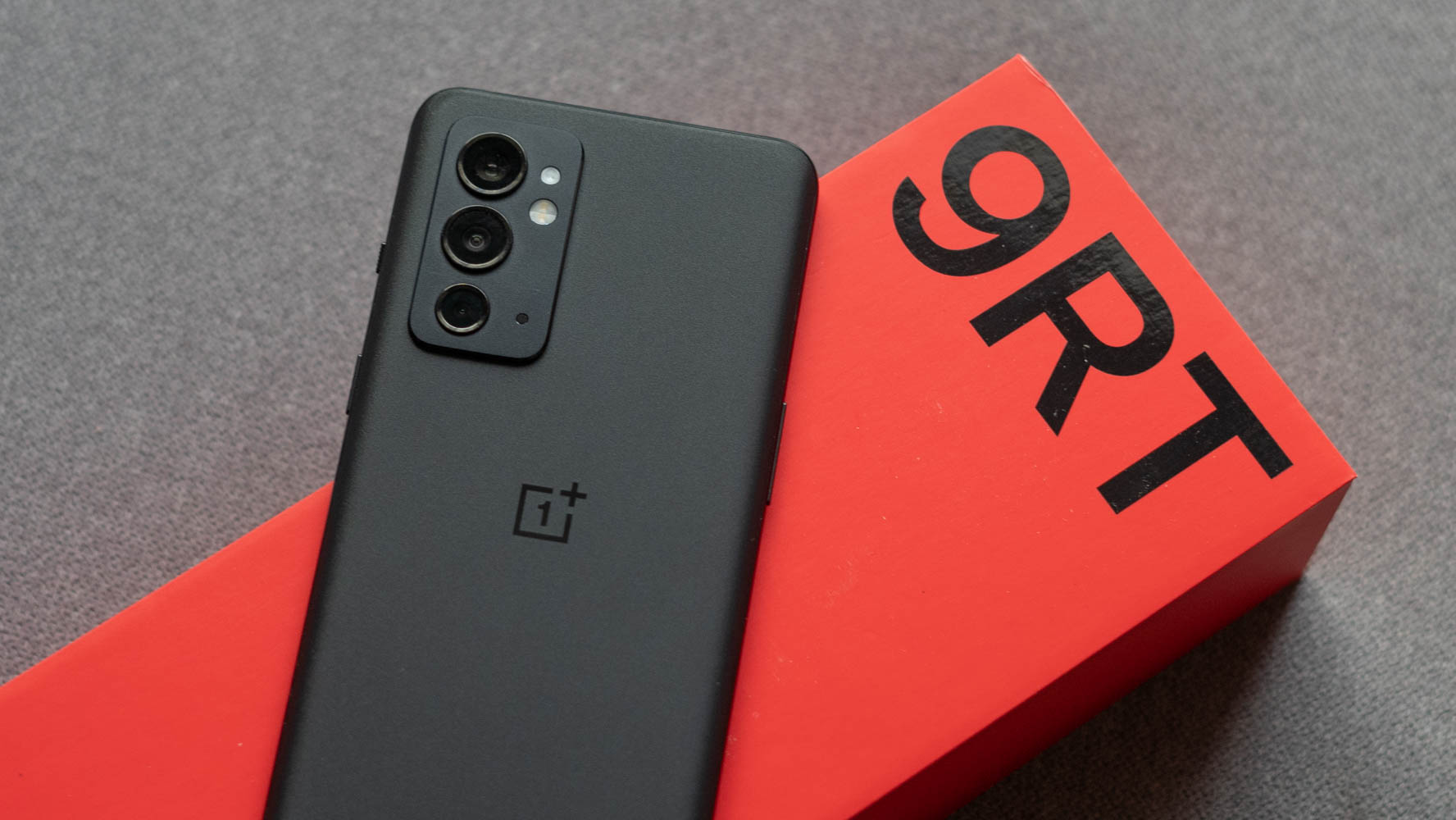
- Software: For better or worse, the OnePlus 9R is running Android 11 with Oxygen OS 11.3 onboard. Given the bug-ridden Oxygen OS 12 rollout and the controversial, OPPO-like visual design, that might not be a bad thing. You won’t find any new features here, but the software was reliable during our testing. Long-standing bugs like missing notifications for Gmail were a no-show. Additionally, you’ll find OnePlus essentials like a work-life balance mode, a fairly customizable app drawer, and a bare-minimum load out of third-party apps like Netflix and Spotify. OnePlus claims that the 9RT will get the significantly revamped Oxygen OS 12 sometime in spring.
- Support: While initially coy about the support period for the phone, OnePlus has finally confirmed that it will dole out a very respectable three years of updates. That said, launching a phone in 2022 without Android 12 onboard seems like a cop-out for the brand.
- IP Rating: The OnePlus 9RT has no IP rating. In fact, OnePlus hasn’t claimed any ingress protection at all so it’ll probably be a good idea to keep this phone tucked safely away on your next beach holiday. It’s a rather egregious omission considering an increasing number of mid-range and even budget options now include some sort of IP rating.
- Speakers: The phone ships with a pair of stereo speakers that are perfectly loud with an emphasis on midrange frequencies. Combined with the decent volume levels, I could comfortably listen to podcasts using the speakers on the OnePlus 9RT. Unfortunately, the speakers are imbalanced, with the earpiece sounding noticeably quieter than the speaker along the bottom edge.
- Connectivity: The phone supports 5G networks, but you won’t be getting mmWave support here. That doesn’t really matter considering the phone’s target markets. However, with support for just five bands, it isn’t the best equipped for India either — especially if you plan to hold on to the phone for a few years. Whether it makes a difference or not remains to be seen since 5G rollouts haven’t begun in India yet. It does support Wi-Fi 6, however, which offers some decent future-proofing for home networks.
OnePlus 9RT specs
| OnePlus 9RT | |
|---|---|
Display | 6.62-inch AMOLED 20:9 aspect ratio 2,400 x 1,080 at 397ppi 120Hz refresh rate (static) |
Processor | Qualcomm Snapdragon 888 |
RAM | Min: 8GB Max: 12GB |
Storage | Min: 128GB UFS 3.1 Max: 256GB UFS 3.1 No external storage support |
Power | 4,500mAh battery Warp Charge 65 65W charger in box No wireless charging |
Ports | USB-C 2.0 No 3.5mm headphone jack |
Connectivity | 5G support 2x2 MIMO Wi-Fi 802.11 a/b/g/n/ac/ax NFC support Bluetooth 5.1 |
Cameras | Rear: 1) 50MP main (Sony IMX766) ƒ/1.8, OIS and EIS 2) 16MP ultra-wide ƒ/2.2 123-degree field-of-view 3) 2MP macro Front: 16MP single (Sony IMX471) 1.0μm with EIS ƒ/2.4, fixed focus |
Video | 4K at 30 or 60fps Super slo-mo at 720p/480fps or 1080p/240fps Time lapse at 1080p/30fps or 4K/30fps |
Audio | Bluetooth 5.2 aptX, aptX HD, LDAC, AAC Dual stereo speakers Dolby Atmos |
Security | No IP rating against water/dust In-display fingerprint sensor Face unlock (insecure) |
Software | Android 11 Oxygen OS 11 |
Dimensions and weight | 162.2 x 74.6 x 8.29mm 198.5g |
Colors | Hacker black, Nano silver |
Value and competition
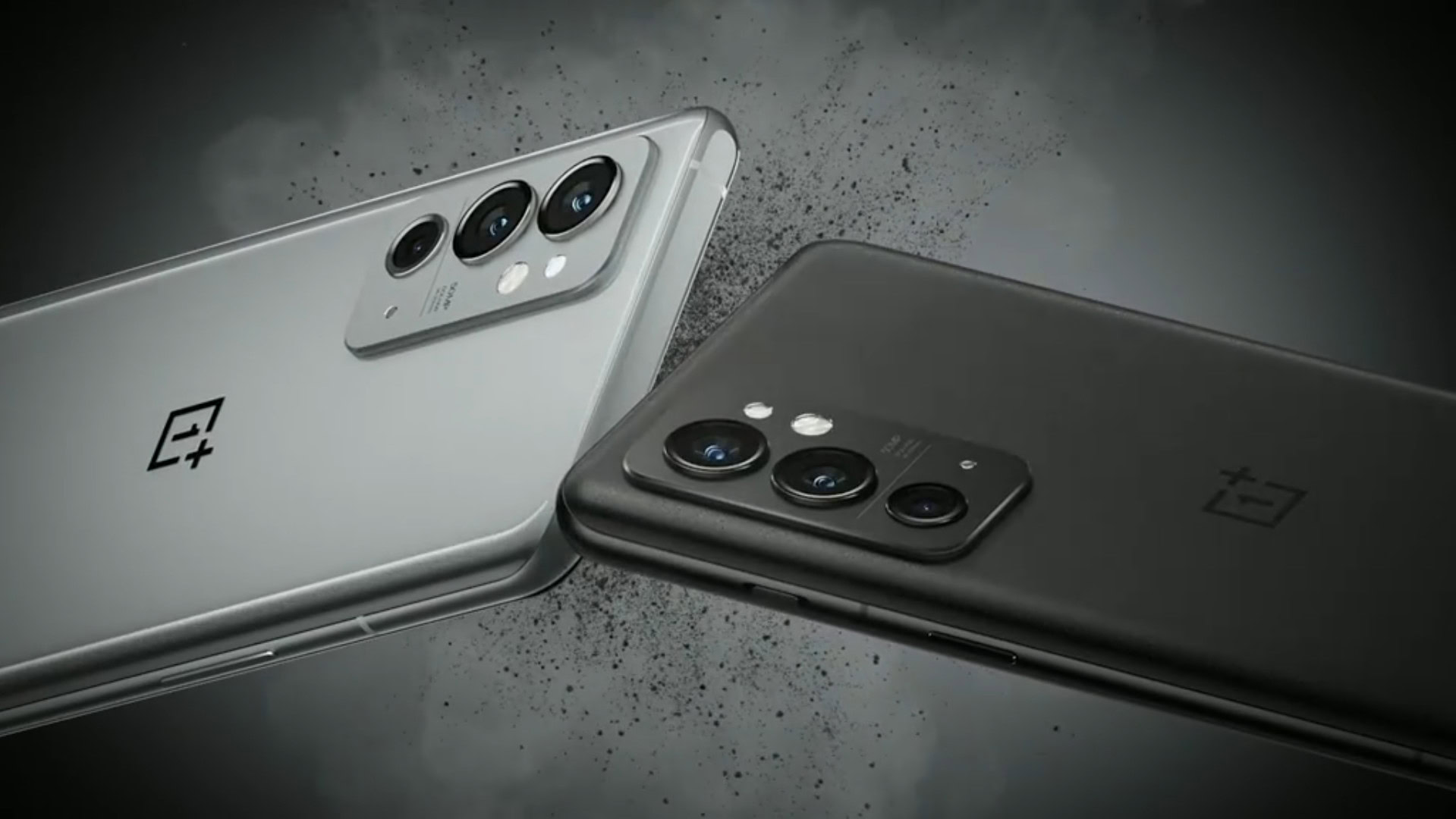
The OnePlus 9RT is a pretty solid phone as far as OnePlus devices go. Looking at it in isolation, I’d even say that it is a decent option in the category. However, the phone is placed bang in the middle of intense competition, and the competition is really good.
Barring a few niggles like the lack of OIS and thicker bezels, the Xiaomi 11T Pro (Rs. 39,990/€649) is far from perfect, but it handily trounces the OnePlus 9RT on the spec sheet and is priced much lower to boot. The phone packs innovative additions like 120W charging and a true 10-bit panel enabling HDR content, as well as three years of software updates. With its sub-Rs. 40,000 price tag, the Xiaomi 11T Pro presents itself as a strong alternative to the OnePlus 9RT.
You could, of course, also step up to the OnePlus 9 ($729/Rs.44,999) which gives you most of the same specs but sports a much improved ultrawide camera and can be updated to Android 12.
There’s also the Samsung Galaxy S21 FE ($699/Rs.49,999). Samsung’s latest value flagship brings the Galaxy S21 Ultra’s Exynos 2100 chipset to a whole new price point. The camera setup delivers the goods with a 12MP primary sensor and 8MP sensors for the ultrawide camera and telephoto sensors. You even get three years of updates and four years of security patches.
OnePlus 9RT review: The verdict
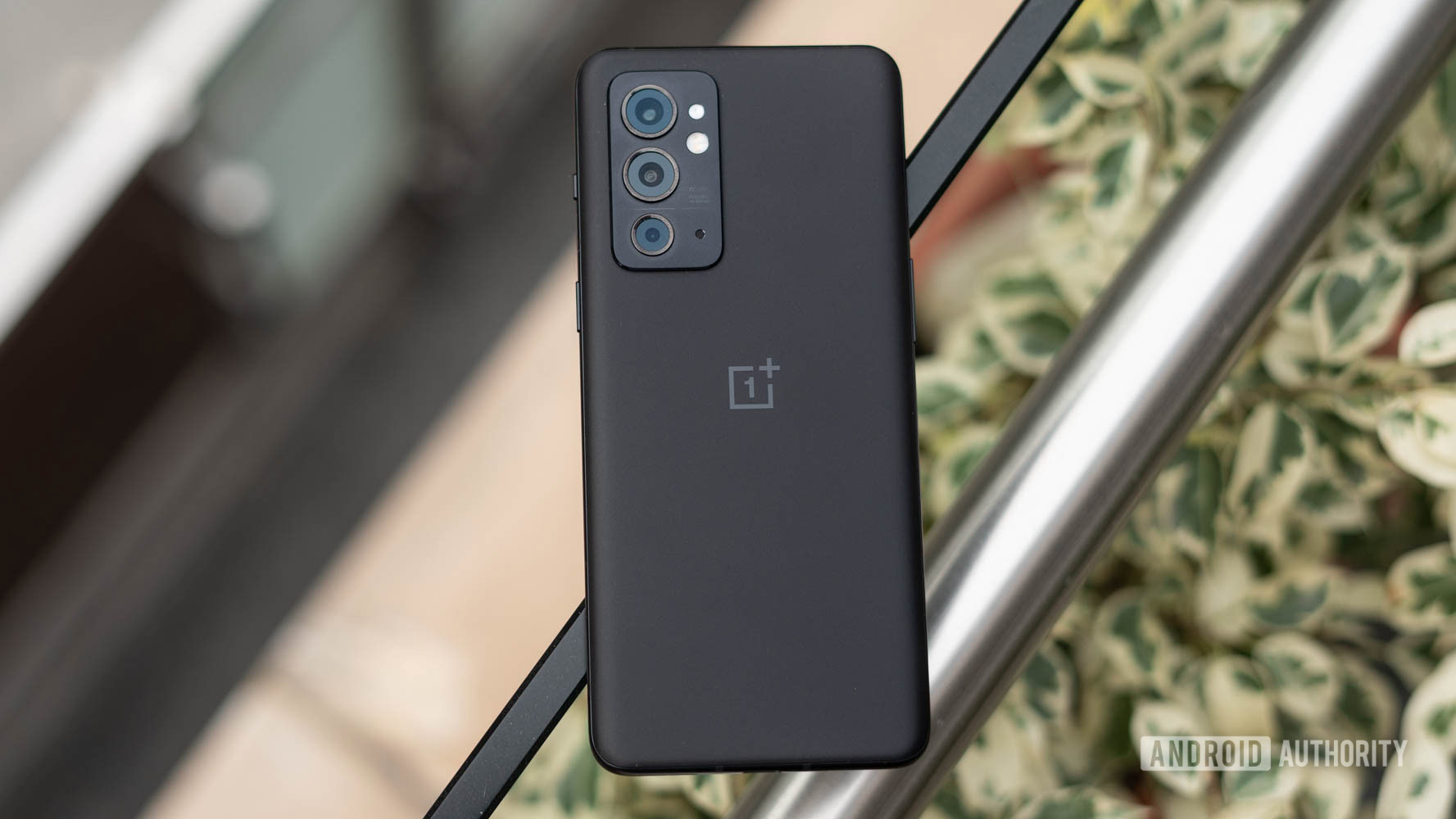
Given the sheer variety of options available, I can’t help but feel that the OnePlus 9RT is just coasting along. It does nothing to move the needle forward for the brand and comes across as a token offering in the segment.
The OnePlus 9RT comes across as a token offering in the competitive value flagship segment, despite the alternatives taking giant leaps.
While the core experience is solid, buyers in the value flagship segment in India demand more, and the OnePlus 9RT is far from the most equipped option in the category. The lack of bloat helps the argument in favor of OnePlus, but it lacks any semblance of a wow factor. Add to that the hardware negatives and omissions, and the OnePlus 9RT starts to feel like a missed opportunity.
Recent rumors suggest that OnePlus might also be readying a OnePlus 10R making the timing of the 9RT’s launch even more awkward. Word of advice, if you’re really looking for a new affordable OnePlus phone, wait until the dust settles or play it safe and just get a OnePlus 9 instead.